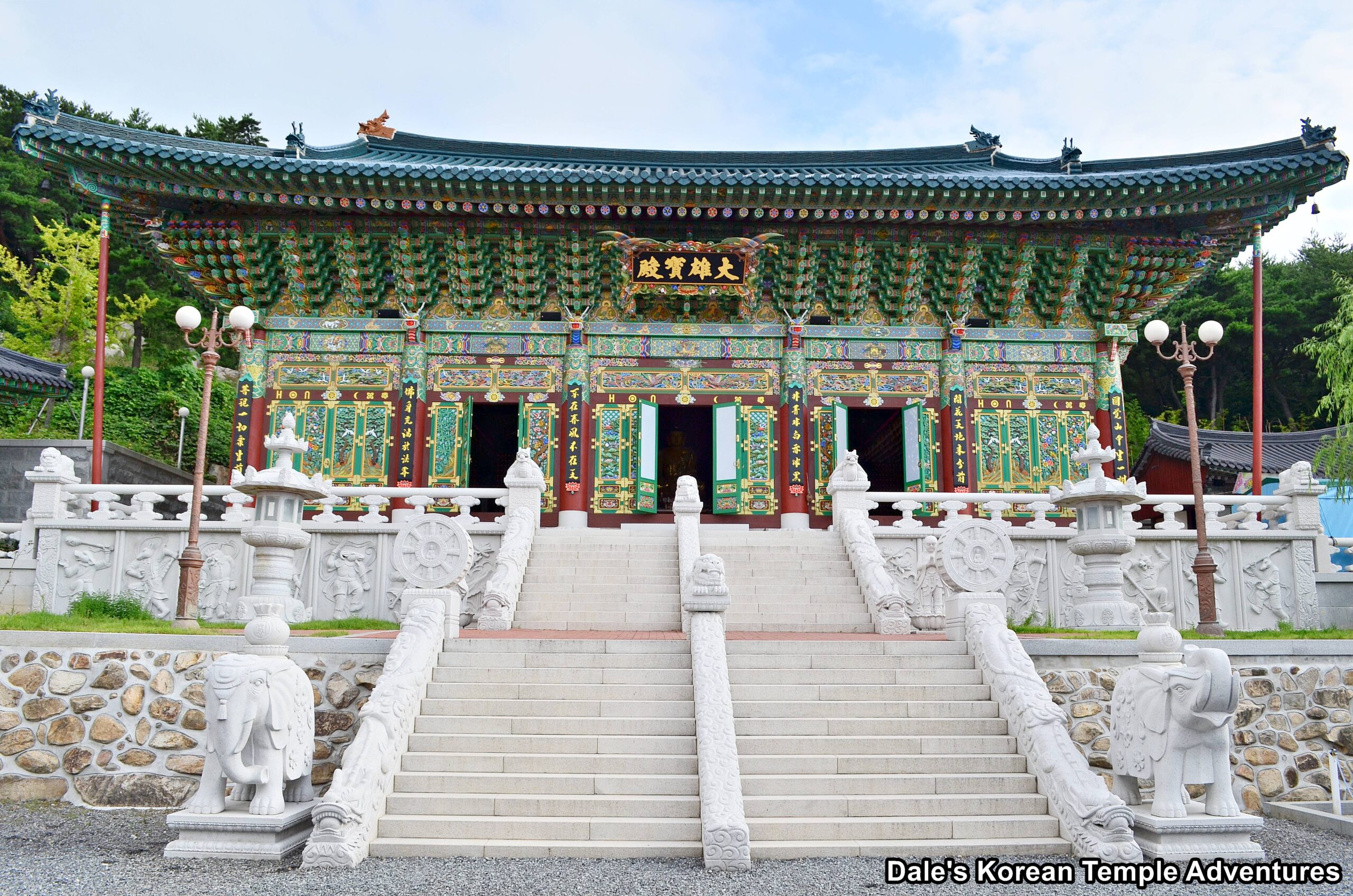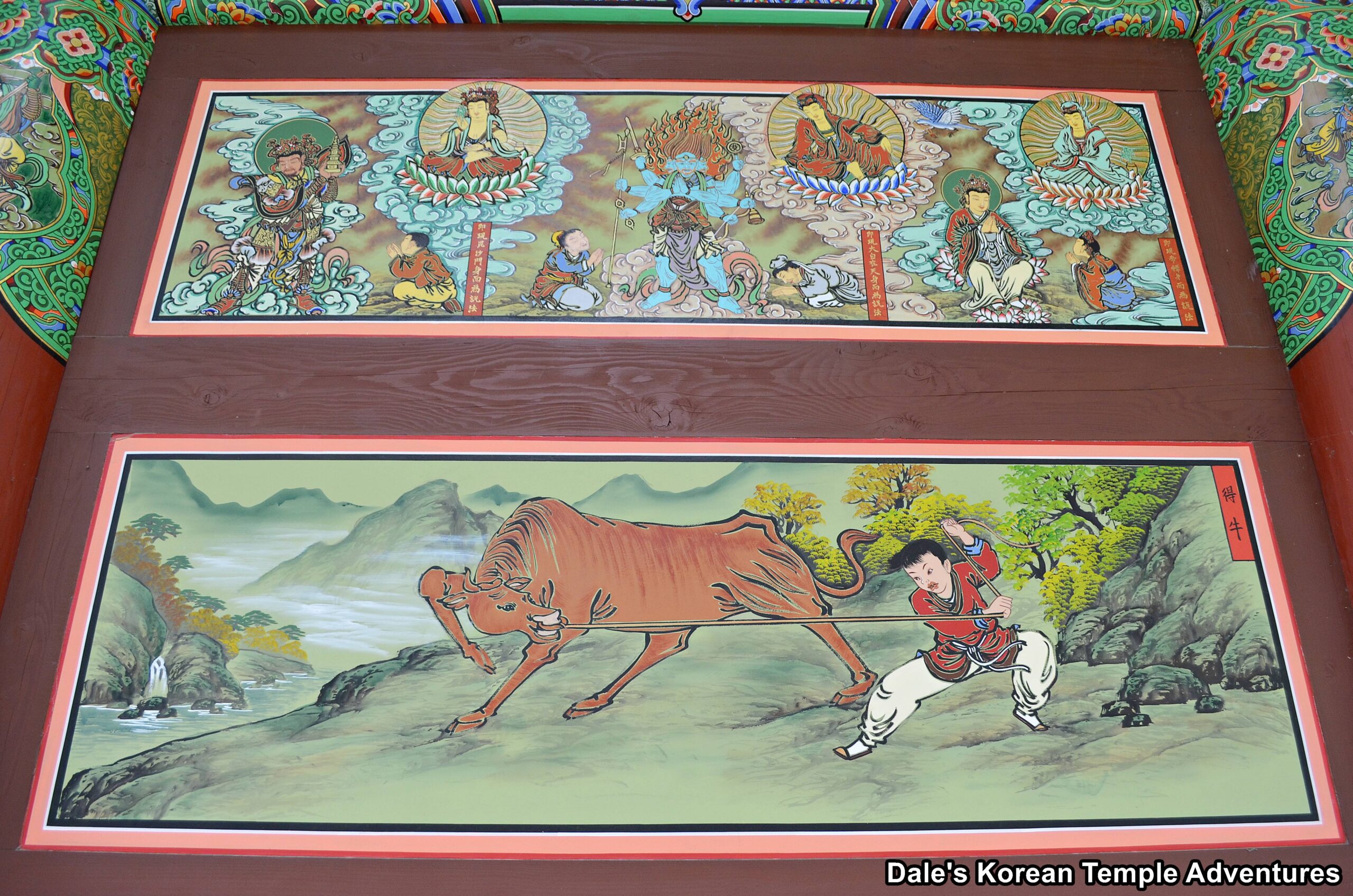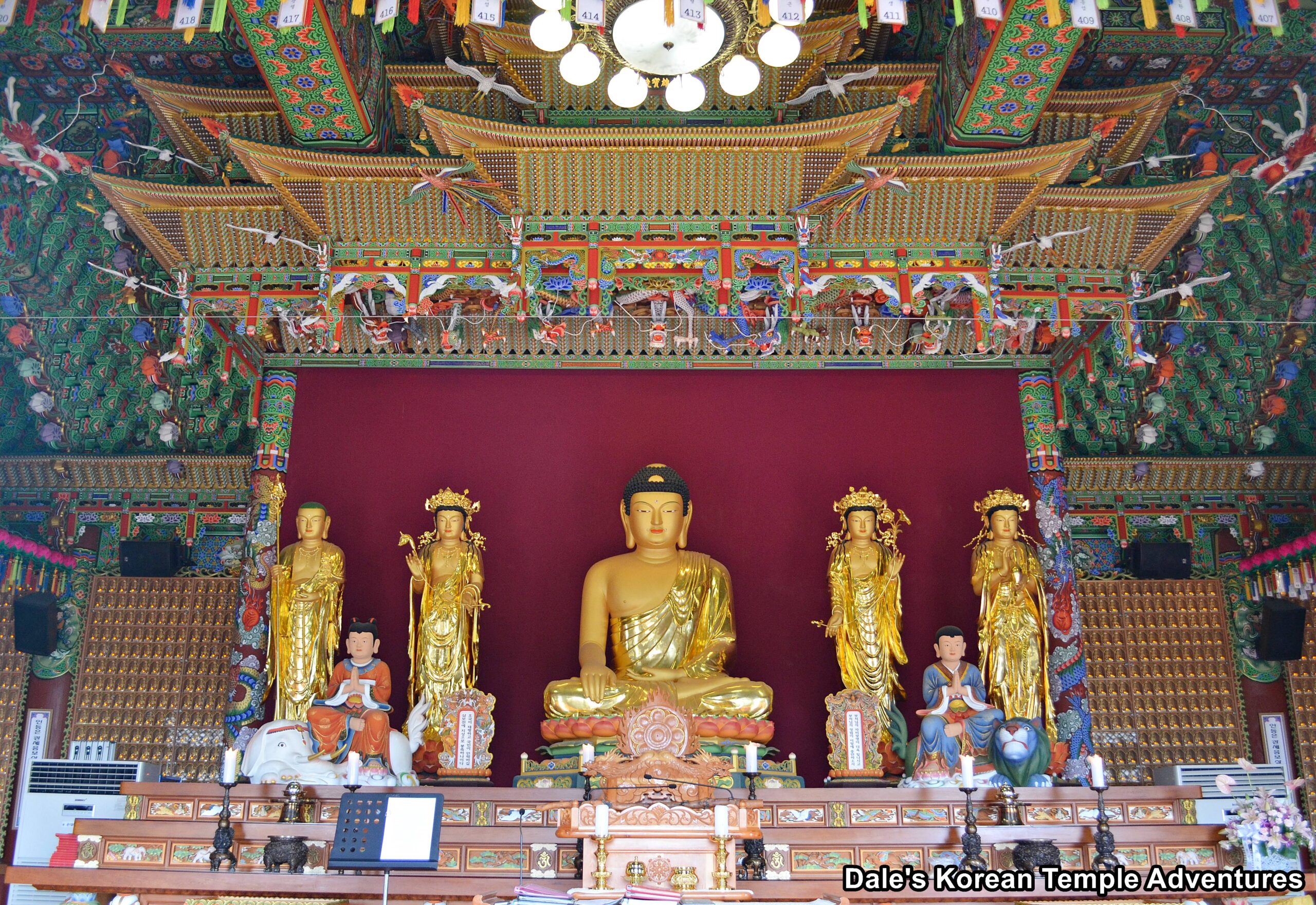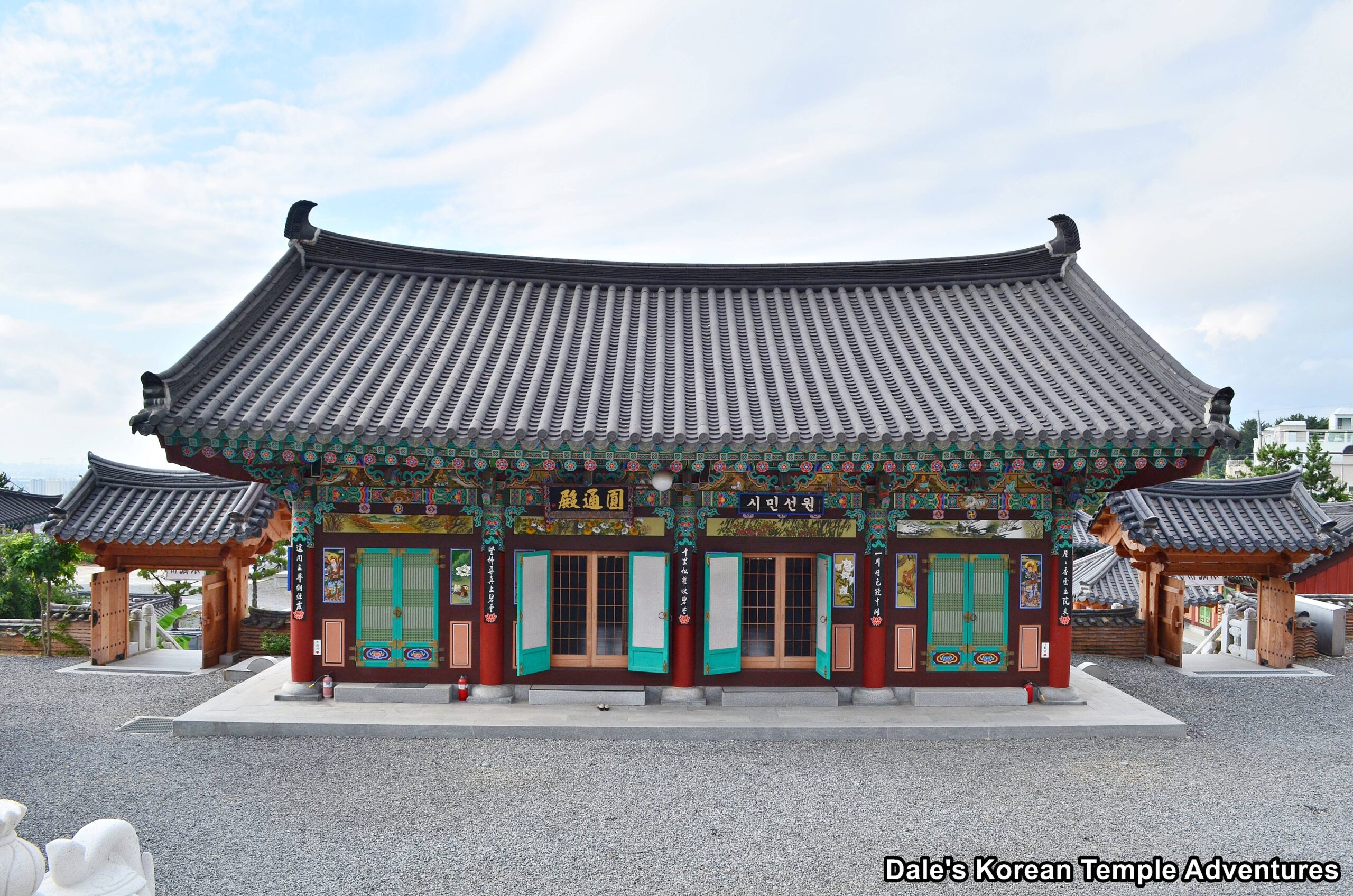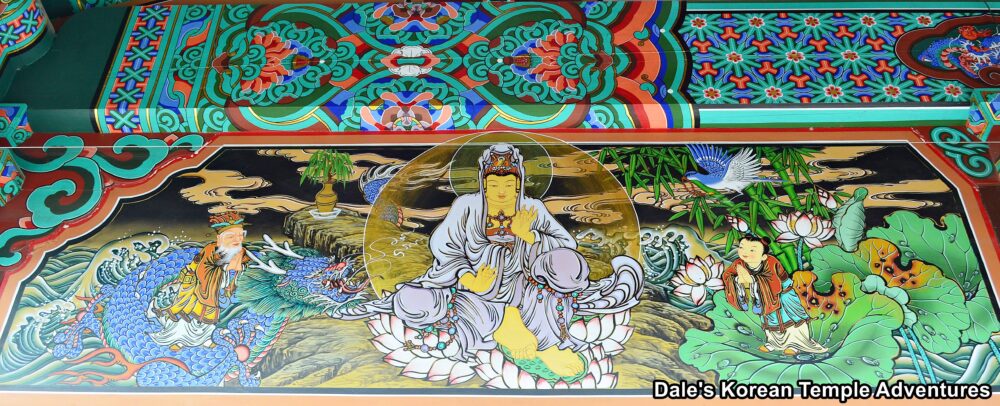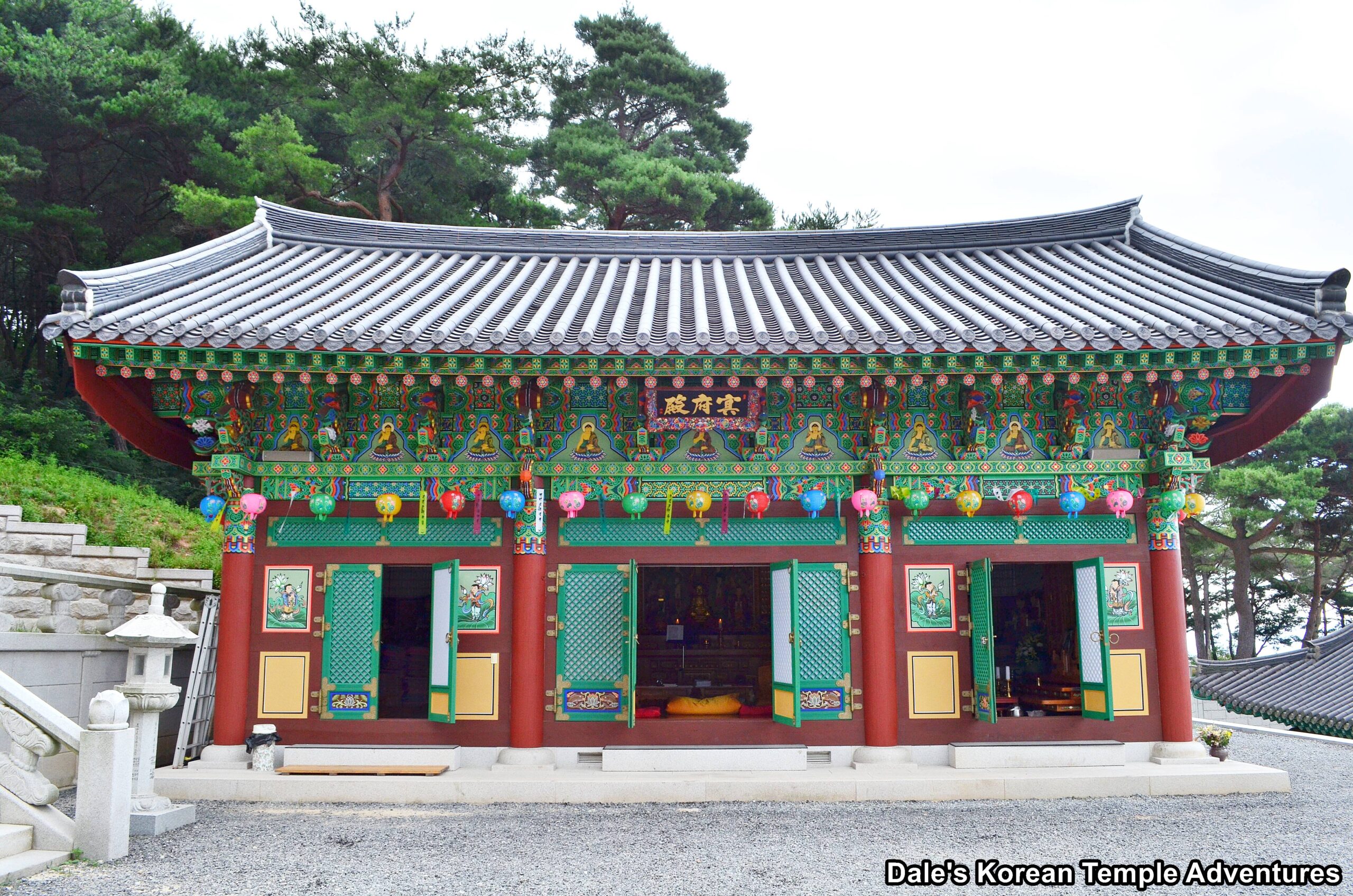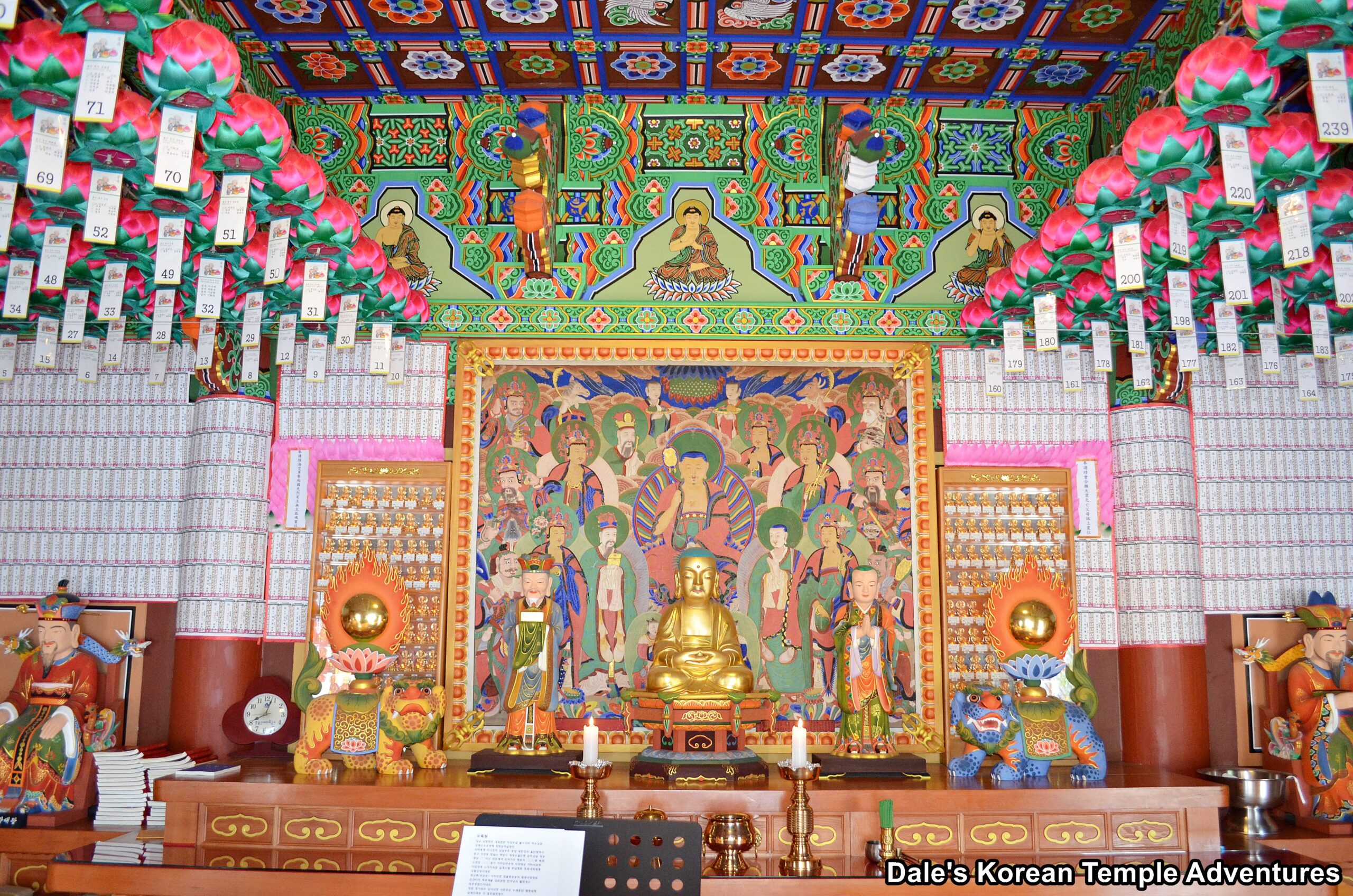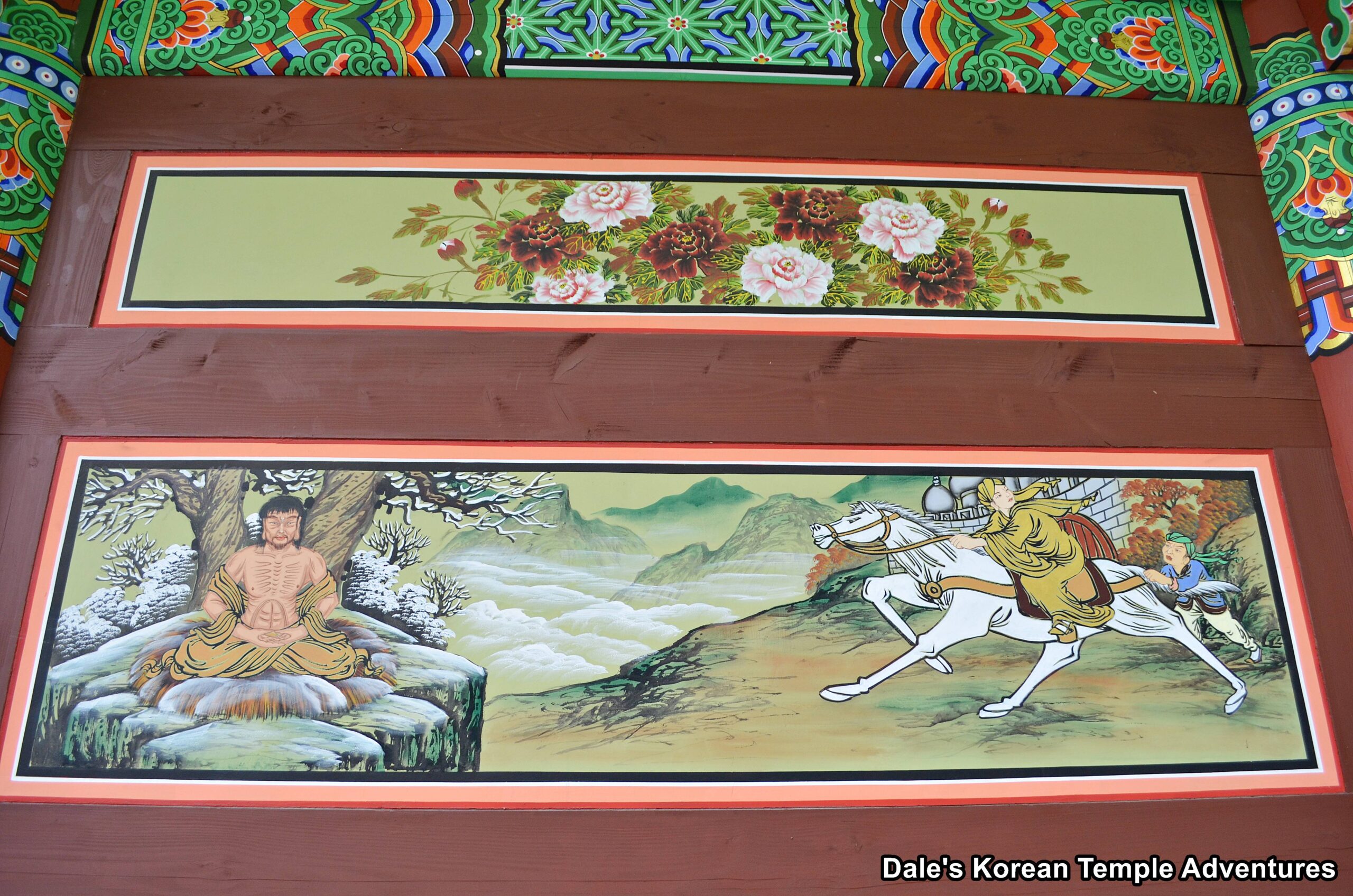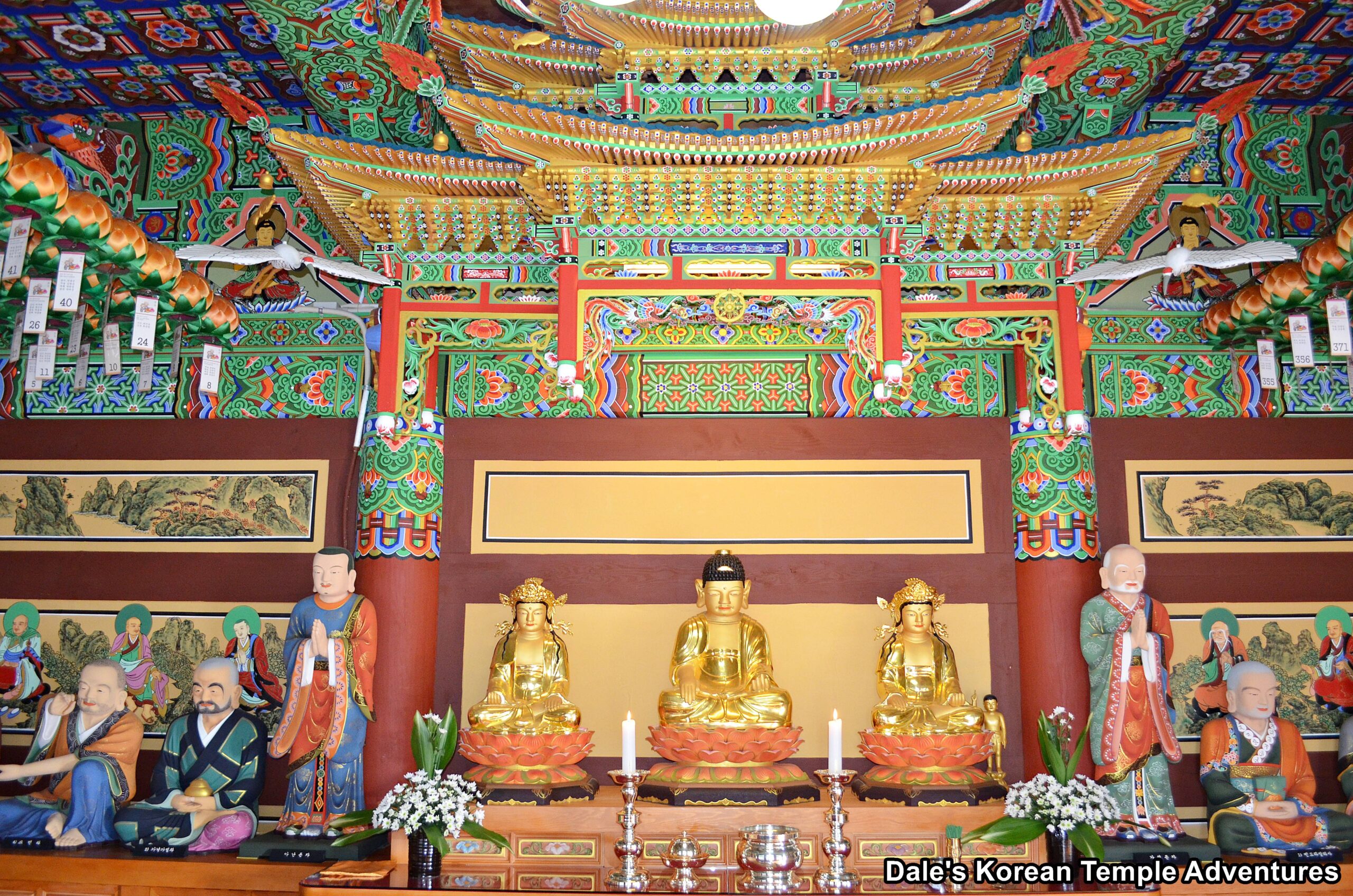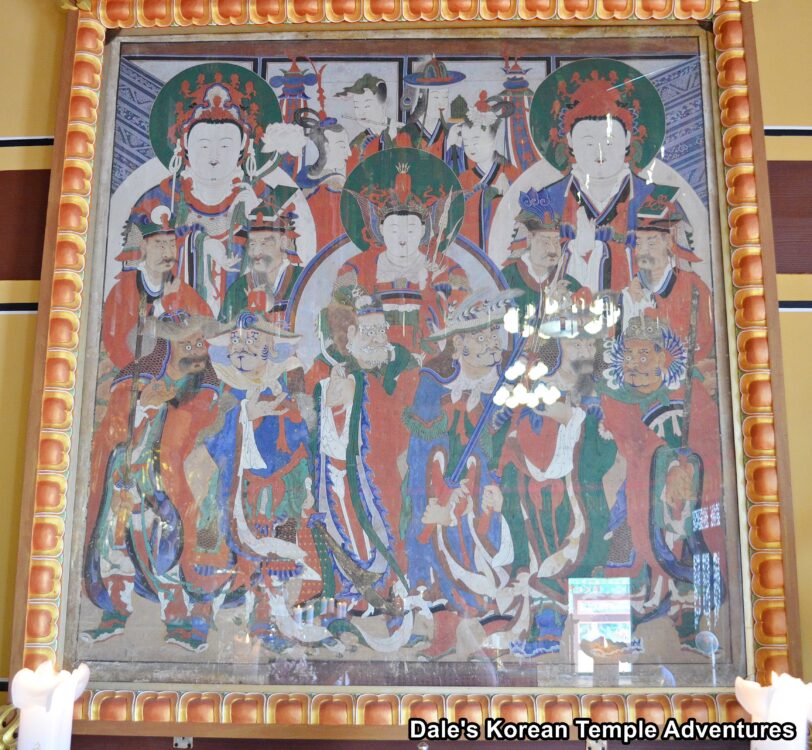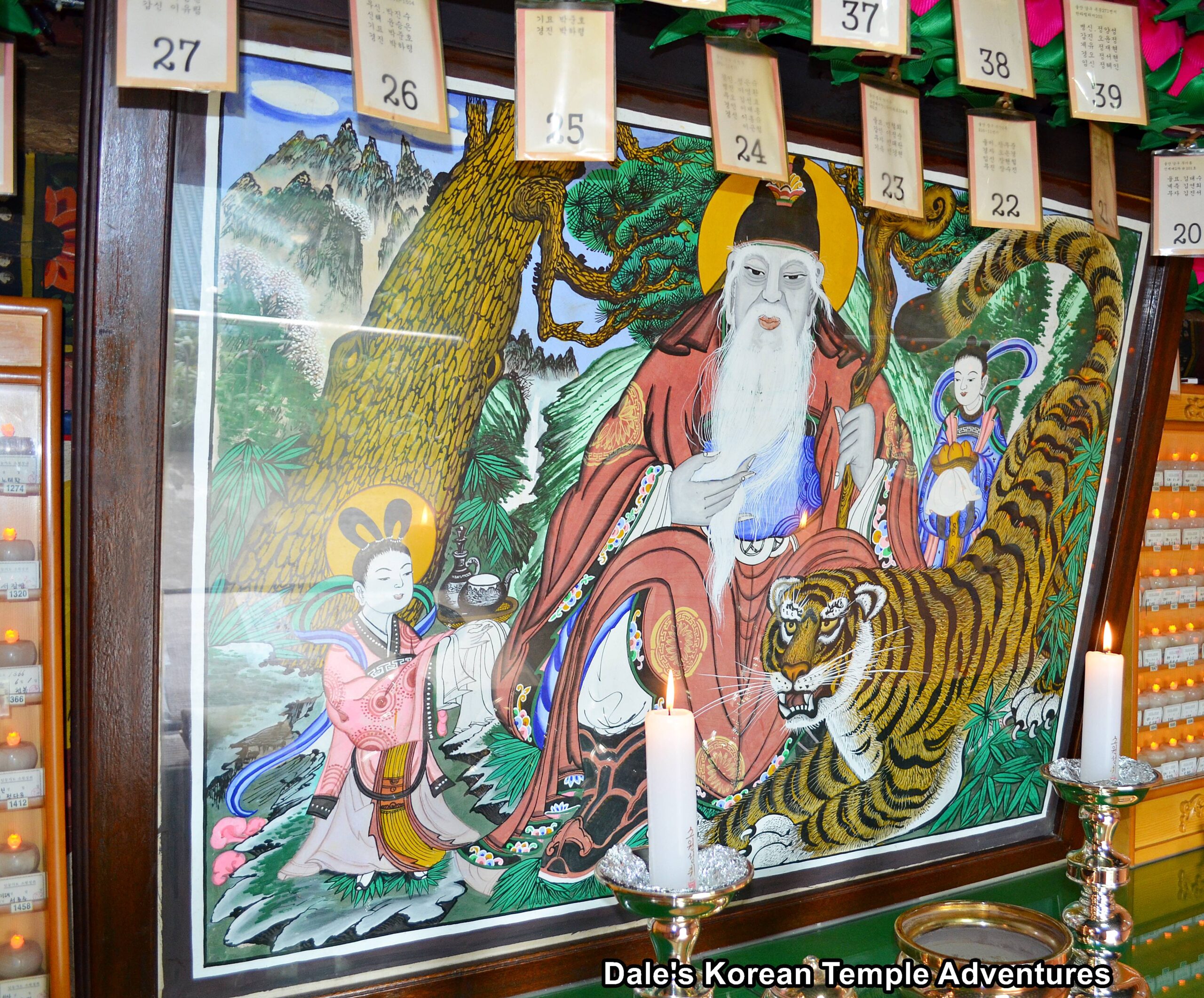Baekyangsa Temple – 백양사 (Jung-gu, Ulsan)
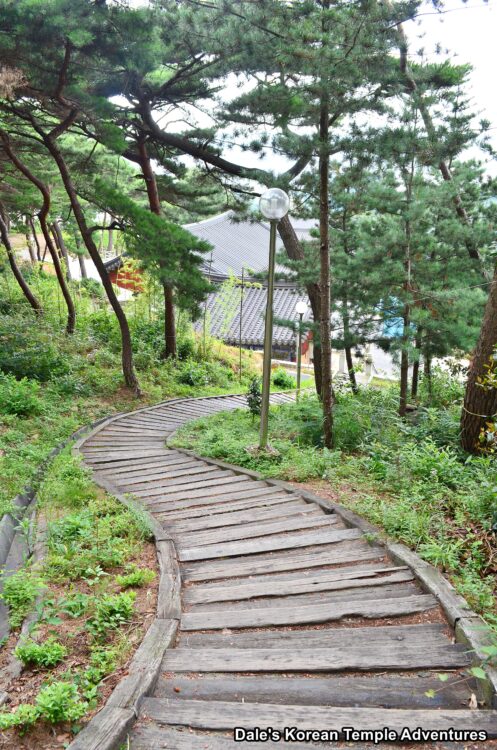
Temple History
Baekyangsa Temple at the foot of Mt. Hamwolsan (200.6 m) in Jung-gu, Ulsan, which shouldn’t be confused with the one in Jeollanam-do, was first founded in 932 A.D. by the monk Baekyang-seonsa. In fact, the temple is named after this founding monk. The temple was destroyed by fire during the Imjin War (1592-1598). However, Baekyangsa Temple was later rebuilt in 1678 by the monk Yeonbu-seonsa.
Baekyangsa Temple would later fall into disrepair. And in the 1920’s, the temple would be resurrected under the watchful eye of the Bhikuni (nun) Bohyeon. More recently, and in 1992 with the development of Jung-gu, which is where Baekyangsa Temple is located, this area became the city centre of Ulsan. While the temple used to be located up in the mountains in rural Ulsan, it is no longer the case with the overall development and spread of the urban areas in Ulsan.
Since 1998, Baekyangsa Temple has undergone a large scale renovation and expansion which continues to this day. As for the temple itself, it was designated as Ulsan Traditional Buddhist Temple #6 in 1999. And the historic Shinjung-do (Guardian Mural) that dates back to 1878 that’s housed at Baekyangsa Temple is Ulsan Metropolitan City Tangible Cultural Heritage #27.
Temple Layout
You’ll first approach the temple grounds off of some neighbouring city streets, and make your way under the newly constructed Iljumun Gate. This sturdy, and rather colourful entry gate, has a pair of stone sculptures at its base. To the left is a lion and to the right is a dragon holding a wisdom pearl in its mouth.
Now making your way through the temple parking lot, and the simplistic Jong-ru (Bell Pavilion), you’ll notice a cluster of buildings. Past these, and to the right, there’s a stone stairway that will bring you to the main temple courtyard at Baekyangsa temple. It’s from this vantage point that you’ll find all the amazing shrine halls that Baekyangsa Temple has to offer.
The first of these temple shrine halls, and to your rear, is the Gwaneum-jeon Hall. The exterior walls to this hall are beautifully adorned with paintings of animals, the Sacheonwang (The Four Heavenly Kings), and paintings dedicated to Gwanseeum-bosal (The Bodhisattva of Compassion). As you step inside this sparsely decorated interior, you’ll notice the main altar to your right. Standing in the centre, all by herself, is an image of Gwanseeum-bosal. This statue is backed by an equally eloquent painting of herself joined by Yongwang (The Dragon King). There is a fiery nimbus surrounding the statue, and there are two large Bicheon (Flying Heavenly Deities) floating overhead of the Bodhisattva of Compassion.
As you step outside the Gwaneum-jeon Hall, you’ll notice the monks residence to your immediate right. This hall is beautifully adorned with Shimu-do (The Ox-Herding Murals). And to your immediate left are facilities at the temple like the kitchen and visitors centre.
But by far the main highlight to this temple, and straight ahead of you, is the Daeung-jeon Hall at Baekyangsa Temple. Out in front of the main hall is a variety of stone statues like twin elephants, the Wheel of Dharma, and the Sibiji-shin (The Twelve Zodiac Generals), as well as a Bicheon, and massive stone lanterns. Nearing the Daeung-jeon Hall, and looking around the eaves of the hall, you’ll notice the amazingly intricate dancheong that’s adorning the main hall. In addition to the vibrant dancheong, you’ll notice one of the finest collection of Shimu-do (Ox-Herding Murals) in Korea. In addition to this amazing set, you’ll also be greeted by various Buddha and Bodhisattva murals around the exterior walls, as well, to the Daeung-jeon Hall. Before stepping inside the Daeung-jeon Hall, make sure you have a look at the stunning front floral latticework that adorns the doors. As for the interior, there are five statues that take up residence on the main altar. Sitting in the centre is the largest in the set. This statue is dedicated to Seokgamoni-bul (The Historical Buddha). To the right and left of this central statue are two standing statues. They are Munsu-bosal (The Bodhisattva of Wisdom) and Bohyeon-bosal (The Bodhisattva of Power). And completing the set, and standing to the far left, is a green haired statue dedicated to Jijang-bosal (The Bodhisattva of the Afterlife). And on the far right is another standing statue. This time, however, this statue is dedicated to Gwanseeum-bosal. And hanging on the far left wall is an older, red mural dedicated to Amita-bul (The Buddha of the Western Paradise). This mural is fronted by a triad of statues, again, centred by Amita-bul and joined by Gwanseuum-bosal and Daesaeji-bosal (The Bodhisattva of Wisdom and Power for Amita-bul) on either side.
To the left of the Daeung-jeon Hall is the Eungjin-jeon Hall at Baekyangsa Temple. Adorning the exterior walls to this hall dedicated to the Nahan (The Historical Disciples of the Buddha) are a beautiful collection of Palsang-do (The Eight Scenes from the Buddha’s Life). Stepping inside the Eungjin-jeon Hall, you’ll be greeted by sixteen masterful statues of the Nahan with each of their names written in front of them on a black plaque. Sitting in the centre of these sixteen statues, eight on either side, is a triad, rather uniquely, centred by Amita-bul and joined by Gwanseeum-bosal and Daesaeji-bosal, again. It’s also inside the Nahan-jeon Hall, hanging on the right side of the shrine hall, that you’ll find the historic Shinjung-do (Guardian Mural) from 1878.
And to the right of the Daeung-jeon Hall is the temple’s Myeongbu-jeon Hall. Around the exterior walls are various Buddhist motif murals of coming of age. It’s also on these walls that you’ll find one of the more sensational images of the Dragon Ship of Wisdom to adorn a temple shrine hall in Korea. As for the interior, there are large sized seated statues of the Siwang taking up residence inside the Myeongbu-jeon Hall. And taking up residence in the centre of the main altar is a rather dour older image of Jijang-bosal with green hair.
Next to the Myeongbu-jeon Hall is the Chilseong/Dokseong-gak Hall. Each mural housed inside this shaman shrine hall are dedicated to Chilseong (The Seven Stars) and Dokseong (The Lonely Saint), and they are rather typical in their composition inside the Chilseong/Dokseong-gak Hall. Also housed inside this hall, rather uniquely, and to the left, is a mural dedicated to the founding monk of the temple: Baekyang-seonsa.
The final temple shrine hall that visitors can explore at Baekyangsa Temple is to the rear of the main temple complex and up a side-winding set of wooden stairs. Fronted by a rather tacky fading picture of a tiger, the Sanshin-gak Hall houses one of the more peculiar images of Sanshin (The Mountain Spirit) inside the confines of this type of shaman shrine hall. The image of Sanshin looks rather unhealthy and ghost-like in appearance; thus, bucking the more traditional trend of exuding health and virility found in the image of The Mountain Spirit. It’s also from the heights of the Sanshin-gak Hall that you get a great view of the temple compound and the rest of Ulsan off in the distance.
How To Get There
To get to Baekyangsa Temple, you’ll first need to ride Ulsan city Bus #5003 from the Ulsan Train Station. With this bus, you’ll need to get off at the Samhogyo bus stop. From here, you’ll need to transfer to Bus #408 for an additional six stops, where you’ll need to get off at the Gungdojang bus stop. From this bus stop, you can walk to get to the Ulsan City Police Station Headquarters. From here, you’ll need to walk about five to ten minutes, or six hundred metres, to get to Baekyangsa Temple.
Overall Rating: 8/10
There’s quite a lot to see and enjoy at Baekyangsa Temple in central Ulsan. First, you can enjoy all the amazing murals that adorn all the exterior shrine hall walls at the temple. Another thing to enjoy are all the inspiring statues at Baekyangsa Temple like the statued dedicated to Gwanseeum-bosal inside the Gwaneum-jeon Hall and the Nahan statues housed inside the Eungjin-jeon Hall. In addition to all this artistry, there’s all the beauty surrounding the Daeung-jeon Hall like the latticework, the statues, the dancheong colours, and the beautiful murals, as well as the main altar statues. Adding to all this is the haunting image of the Mountain Spirit housed inside the Sanshin-gak Hall to the back of the temple grounds.
